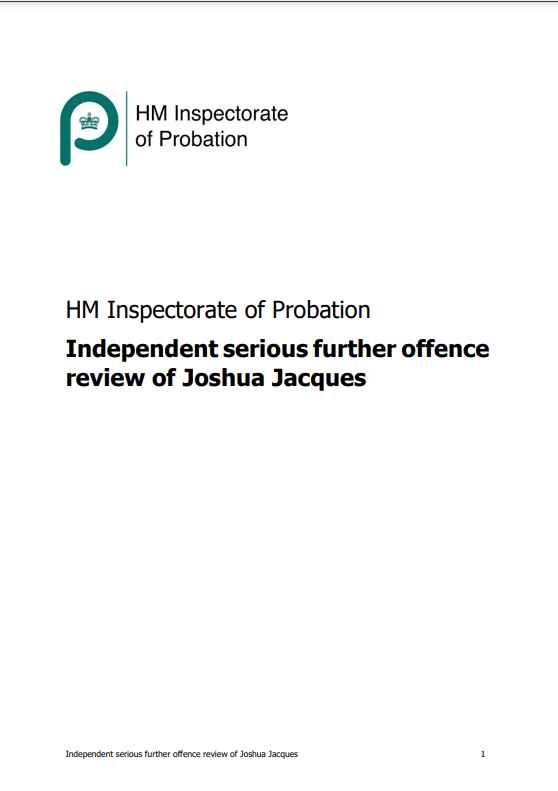By Kelly Lyn Mitchell
This report is one in a series of reports for the Aligning Supervision Conditions with Risk and Needs (ASCRN) project, the goal of which is to reduce probation and parole revocations and reorient community supervision toward promoting success by changing the way probation and parole conditions are imposed. Conditions are requirements that a person on probation or parole must adhere to while serving a period of community supervision. For people on parole, this occurs after the person has served time in prison and is released into the community for a post-prison period of supervision. For people on probation, this period of supervision occurs in the community in lieu of incarceration. The hypothesis for this project was that if probation and parole conditions targeted individuals’ criminogenic needs and were based upon risk level, individuals on supervision would be more successful.1 However, to move to this form of condition setting, we first needed to understand how conditions were being determined and what role, if any, risk and needs assessments played in the condition-setting process. This report sets forth our findings on the parole condition-setting process utilized by the Iowa Parole Board and what role, if any, risk and needs assessments play in the condition-setting process. The findings in this report are based primarily on a legal and policy review and interviews conducted in 2020 with relevant stakeholders who we presumed would have a hand in recommending or imposing supervision conditions, including parole board members, staff, administrative law judges, and parole officers. From this study, we make the following conclusions. Conclusions Parole conditions in Iowa are not tailored to the risk and needs of the individual. Parole conditions in Iowa take a one-size-fits all approach. As explained in this section, several factors converge to create a system where every person on parole receives a lengthy set of conditions within which less than a handful are tailored to the individual needs of the person. ƒ There is a heavy reliance on standard conditions. There is a perception within the state that there are very few standard conditions because they fall into just eight paragraphs. But when the text in each of the eight paragraphs is parsed into individual conditions, there are thirty-five distinct requirements. This extensive set of standard conditions sets what parole board members and parole officers refer to as “standards for behavior,” but the sheer number of conditions is more than any one person could reasonably comply with at one time. ƒ The Parole Board only adds a few special conditions to each case, but it has lost sight of the total number of parole conditions imposed on individuals. The Parole Board is parsimonious when adding special conditions to each case. Parole board members are concerned about overloading individuals on parole and typically only consider or discuss adding one or two special conditions as each person is paroled. However, because the Parole Board only focuses on setting special conditions, it has lost sight of the total number of standard conditions already imposed on those who are on parole. Several parole board members we spoke to did not know how many standard conditions there were, and some mistakenly thought that conditions they used to impose were no longer available to them when in fact they were already part of the standard conditions. By failing to take the standard conditions into account, the Parole Board undermines its own concern about not overloading people on parole. ƒ Risk assessments are not used to inform condition setting. Iowa utilizes risk and needs assessment throughout the criminal justice process. It informs programming for a person serving time in prison, and case planning for a person once they are released on parole. But risk and needs assessments are not really used in setting the conditions of work release or parole. Staff who prepare the docket for the Parole Board focus on the release decision rather than which conditions to impose, but when they do recommend conditions, they tend to use professional judgment based on past interactions with the person while in prison. Parole board members have access to risk and needs information, but do not really understand it. Instead, they use their best judgment about what conditions to impose. In this way, conditions are not tailored to address the criminogenic needs of the individual. ƒ The Parole Board lacks a feedback mechanism to understand what works in condition setting. Finally, parole board members do not handle parole violations—violations are instead handled by an administrative law judge—so parole board members do not have any way of knowing whether the conditions they impose help or hinder people on parole. Because the Parole Board does not receive any feedback about which conditions work, there is nothing to challenge or inform their professional judgment about which conditions to impose in different situations. Though parole officers are empowered to remove conditions, they do not exercise this power. Instead, parole officers add conditions and selectively enforce the conditions they think aren’t as relevant. Throughout this project, we heard that parole officers remove conditions that aren’t necessary or applicable. However, when asked about this directly, most parole officers indicated that they do not remove conditions. Instead, most talked about adding local conditions such as curfew. Though some parole officers indicated that a few standard conditions are outdated or unnecessary, for the most part, they did not support changing the standard conditions, preferring instead to selectively enforce the conditions they deem most important. Thus, parole officers seek maximum flexibility regarding whether and how to enforce supervision conditions. From the perspective of the person on parole, who has no choice but to conform to all the listed conditions, this way of doing business can be confusing. More crucially, it dilutes the importance of conditions because it becomes unclear for them which conditions must be complied with.
Minneapolis: Robina Institute, University of Minnesota, 2023. 48p.





















